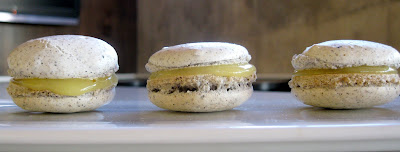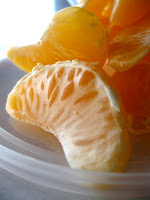
I’ve often wondered how I would look at food and pastry had I ended up going to culinary school. I certainly don’t regret my decision not to go; I often tell myself that everything one learns in culinary school, one can also learn on the job, yet I’m not entirely convinced I believe that. At the very least, culinary schools force you to be exposed to things that you might not otherwise encounter.
Mignardises (Meen-YAR- deez), as a whole, are something that one doesn’t often find in most restaurants. Taken from the Old French word “mignard,” meaning something small or delicate, mignardises are bite-sized desserts that are served at the very end of a meal. Think of them as dessert number two (or three… or four. I suppose it depends where you go). Some typical mignardises would be chocolates, cookies, or candies: pretty much any little confection one could enjoy with coffee. As I said, they don’t often get much play in a lot of restaurants today (especially in the Boulder area), which is a shame, because it gives the diner an opportunity to experience a wider variety of flavors and textures than any single dessert can provide.
I decided to do a mignardise plate at Jianken, to change things up a little, and also to sneak in some shameless self-promotion. Besides, ever since I stumbled across this video on the interwebs, I have been looking for an excuse to make macarons.
Macarons are one of those quintessential French confections that are not given the credit they deserve in the American foodscape. While there’s some debate as to their origins, most people believe that the macaron came about sometime during the 16th century, most likely brought from Italy. In its simplest form, a macaron (note: one “o” not two. Macaroons are entirely different) is just almond flour, egg whites, and sugar, baked together. The ratio of sugar to almonds and sugar to egg whites will effect the end product; more sugar produces a chewier macaron, less makes a crispier one. I had never made a macaron prior to this, and ended up having to do a lot of research before I felt confident to try a batch of my own.
| Black Sesame Macaron | Yield ~ 50 |
| 190g egg whites, at room temperature 250g sugar 100g water 40g black sesame powder 235g almond flower 230 confectioners sugar  | 1) Add egg whites to stand mixer with wisk attachment. Start on med-low speed. 2) In a saucepan, combine sugar and water, and cook to 240°f (soft ball stage) 3) Increase mixer speed to medium and slowly stream in the cooked sugar, trying to pour between the bowl and the wisk so as not to fling the sugar around the bowl 4) Whip until the meringue has cooled and forms still peaks 5) Sift together dry ingredients 6) In three stages, fold the meringue into the dry ingredients until homogenous 7) pipe 3cm circles onto parchment, allowing room for expansion 8) allow to dry for a minimum of 30 minutes at room temperature 9) bake at 400°f for 11 min, or until done. 10) cool, remove from parchment, and sandwich two together with about a teaspoon of yuzu curd |

It took a couple attempts to get a batch that I was happy with. For having so few ingredients, macarons are tricky things to get right. I just need to do it a few thousand more time and I will be as good as the guy in the video.
As for the rest of the plate, I went with some old stand bys, just in case the macarons never turned out. Glazed caramel cake, earl grey and lavender bon bons, and peanut brittle. Classic.
Who knows. One of these days, I may even try my hand at entremets…







